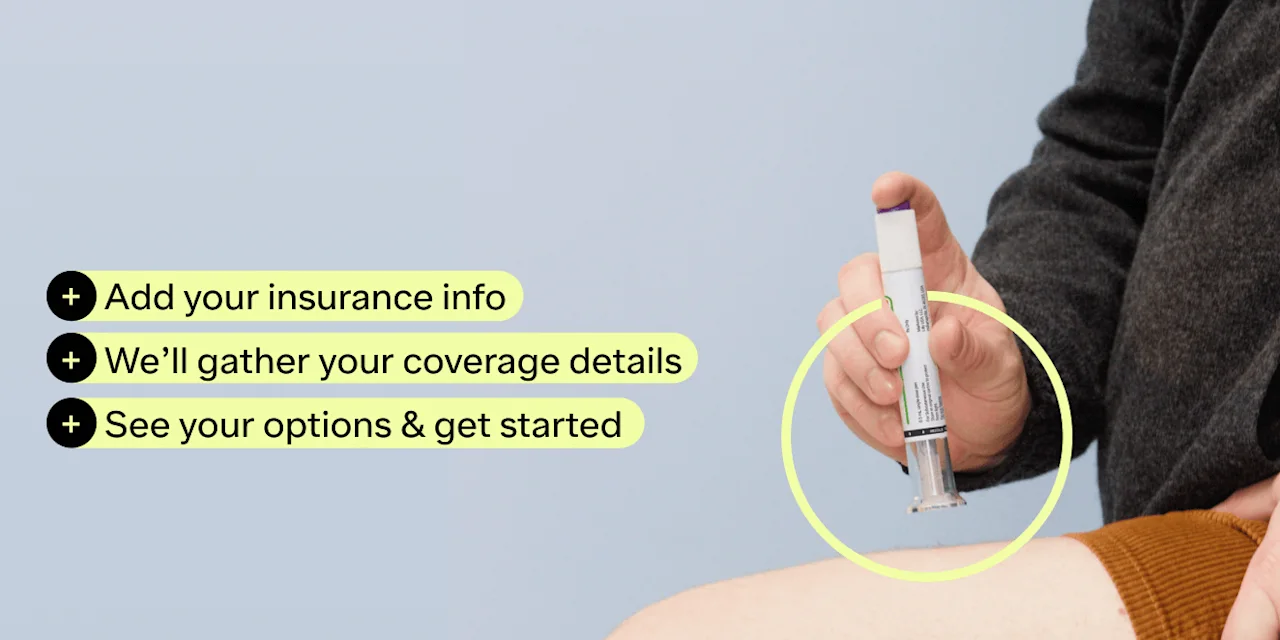Here's what we'll cover
Here's what we'll cover
Weight loss surgery, also known as bariatric surgery, may be an option for people who are obese and have serious health problems due to their obesity. Bariatric surgery helps you lose weight by primarily by restriction, decreased absorption, or a combination of these two principles. Some weight-loss surgeries physically limit the amount of food that your stomach can contain (restriction), thereby reducing your calorie intake. Others shorten the small intestine to decrease the ability of your digestive system to absorb the nutrients from your food (malabsorption), decreasing the total amount of calories your body keeps.
According to the American Society for Metabolic and Bariatric Surgery (ASMBS), people who are candidates for bariatric surgery should meet the following criteria (ASMBS, 2019):
BMI > 40, or more than 100 pounds overweight, OR
BMI > 35 and at least one or more obesity-related health problems, like diabetes, high blood pressure, sleep apnea, fatty liver disease, heart disease, etc.
Inability to achieve sustained healthy weight loss with prior weight loss efforts.
The ASMBS recently added that bariatric surgery should be an option for many people with a BMI of 30 or more, especially taking into account obesity-related health problems (ASMBS, 2019).
Types of weight loss surgery
Laparoscopic adjustable gastric band
Commonly known as a gastric band, this procedure involves using small incisions and a special camera (laparoscope) to place an inflatable band around the top part of the stomach. The band effectively creates a small stomach pouch above the band that receives incoming food; this pouch is connected to the rest of the stomach below the band by a narrow opening. When you eat, this smaller pouch restricts the amount of food that the stomach can hold, leading to feelings of fullness after eating only small amounts of food. A small port is embedded under your abdominal skin and connected to the inflatable band with a tube; by adding or removing fluid, your surgeon can inflate or deflate the band to control how much food is allowed to escape to the larger part of the stomach (below the band). Gastric banding does not change how nutrients are absorbed, but rather the amount of food that you need to feel full (restriction). In addition to the criteria for bariatric surgery listed above, the U.S. Food and Drug Administration (FDA) has approved gastric bands for use in people with a BMI of 30 or more who also have at least one obesity-related health problem (NIDDK, 2016).
Advantages (ASMBS, 2019):
Restricts the amount of food you can eat
Effective -- approximately 40-50% reduction in excess weight
Can be done laparoscopically and does not require open abdominal surgery; shorter hospital stay and lower risk of postoperative complications
Adjustments of the band can be made in the office
Reversible
Low risk of nutrient deficiencies
Disadvantages:
Less dramatic weight loss than some of the other bariatric surgeries
Common side effects: nausea, vomiting, heartburn, and abdominal pain
Can have mechanical problems with the band or the port, including band slippage or erosion into the stomach that may require surgery to remove or replace
Need to stick to a strict after-procedure diet
Sleeve gastrectomy
In a sleeve gastrectomy procedure, also called gastric sleeve surgery, most of your stomach is removed, and the remaining portion is formed into a banana-shaped sac. Just like the gastric band surgery, you now have a smaller stomach, and it takes less food for you to feel full. Removing part of the stomach seems to have the additional benefit of affecting the gut hormones that play a role in hunger, feeling full, and blood sugar control. Studies have shown that this procedure can also improve diabetes, independent of weight loss, likely due to the hormonal effect (Heshmati, 2019).
Advantages (ASMBS, 2019):
Restricts the amount of food that you can eat
Effective -- dramatic weight loss of greater than 50% of your excess weight (ASMBS)
Relatively short hospital stay (approximately two days)
Affects gut hormones resulting in appetite and hunger suppression as well as improvement in blood sugar control
Disadvantages:
Not reversible
Chance of vitamin deficiency
Higher chance of problems after surgery (compared to gastric band procedure)
Increased risk of acid reflux
Duodenal switch surgery
Duodenal switch, also called biliopancreatic diversion with duodenal switch, is a complex surgery that involves two procedures. First, similar to a gastric sleeve, a large portion of the stomach is removed, and the remaining stomach tissue turned into a banana-shaped tube; this pouch remains attached to the first part of the small intestine, the duodenum. The small intestine is where a majority of food is digested and nutrients absorbed.
The second procedure creates a path for food to bypass most of the small intestine. The middle section of the small intestine is first separated from the duodenum. Then the duodenum is directly attached to the end of the small intestine -- this is the duodenal switch. The middle section of the small intestine is not removed because it has necessary attachments to the gallbladder and pancreas and carries bile and pancreatic enzymes necessary for food digestion and nutrient absorption. Since these enzymes are needed, the middle part of the small intestine is reattached to the end of the small intestine so that the enzymes can mix with food as it is digested; this is the biliopancreatic diversion. Food no longer travels through the middle part of the small intestine, just the digestive enzymes.
After a duodenal switch surgery, you can only eat small amounts of food at a time, because of the smaller stomach; that food is then exposed to a reduced portion of the small intestine, further decreasing your overall nutrient absorption, especially protein and fat. The duodenal switch is a combination of restriction and malabsorption surgical strategies. This procedure also affects gut hormones responsible for appetite, hunger, and blood sugar control.
Advantages (ASBMS, 2019):
Significant weight loss with approximately 60-70% excess weight lost.
Restricts the amount of food you can take in.
Absorption of fat drops by 70% or more after surgery.
Affects gut hormones resulting in appetite and hunger suppression as well as improvement in blood sugar control.
Most effective of the bariatric surgery options for treatment of diabetes.
Disadvantages:
Highest risk of postoperative complications of the bariatric surgeries listed.
Longer hospital stay than gastric band or gastric sleeve surgeries
Potential for protein, vitamin, and mineral deficiencies.
Roux-en-Y gastric bypass (aka gastric bypass)
The Roux-en-Y gastric bypass surgery is composed of two parts. First, the stomach is divided so that only a one-ounce (that’s ⅛ of a cup) stomach pouch is available to receive food. As you can imagine, this is going to significantly limit the amount that you can take in at one time. Next, the bariatric surgeon cuts the small intestine and attaches the lower section of the small intestine to the stomach pouch; by doing this, food bypasses most of your stomach and the upper part of your small intestine. The portion of the small intestine that remains connected to the larger section of the stomach is still able to deliver digestive juices, so it is attached to the small intestine farther down.
After this surgery, whatever you eat enters your tiny, one-ounce stomach pouch and passes through a portion of the small intestine where it eventually meets up with the digestive enzymes from the bypassed stomach and intestine. This procedure is considered the “gold standard” of bariatric surgery and combines restriction and malabsorption surgical strategies. Since the stomach pouch is smaller, it restricts how much you can eat. Also, because part of the small intestine is bypassed, less absorption of calories and nutrients occurs. Like some of the other weight-loss surgeries mentioned, this procedure also affects gut hormones, causing a decrease in hunger and appetite as well as an improvement in blood sugar levels.
Advantages (ASBMS, 2019):
Greater weight loss than gastric band surgery; approximately 60-80% excess weight lost.
Restricts the amount of food you can take in.
In the long term, people can typically maintain at least 50% excess weight loss.
Affects the gut hormones to decrease hunger and appetite and improve blood sugar control.
Disadvantages:
More complicated surgery with a higher risk of surgery-related problems and longer hospital stay.
Can lead to vitamin or mineral deficiencies, especially in vitamin B12, iron, calcium, and folate.
Non-surgical weight loss procedures
Gastric Balloon
The gastric balloon—also called an intragastric balloon or a stomach balloon—is a weight loss option that does not involve surgery. The balloon is placed in the stomach with an endoscope (a camera on a flexible tube inserted through the mouth) and inflated with saline. It remains in the stomach and works by applying pressure to the walls of the stomach, making you feel fuller. During this time, your provider will help you learn new dietary habits that are intended to be lifelong and help you maintain your weight loss. The balloon is left in place for up to six months, then deflated and removed from the stomach.
A 2017 review of studies found that using the balloon resulted in a nearly 10% loss of body weight (Tate, 2017). Side effects include pain and nausea after insertion of the balloon, but these symptoms tend to go away after a few days. However, this therapy has had more adverse outcomes; there is a risk that the balloon deflates early and can travel through the digestive system and cause a blockage. Another concerning risk is that the balloon can create a hole in the stomach lining, called a gastric perforation, which may be a surgical emergency. The FDA received reports of twelve deaths that were associated with the gastric balloon between 2016-2018 (FDA, 2019). Some, but not all, of these deaths were associated with gastric perforation. The FDA has stated that they “will continue to monitor the safety and effectiveness of these approved devices.”
In 2018, one study found that, compared to laparoscopic bariatric surgery, gastric balloons had a higher rate of adverse events, as measured by looking at the relative number of times patients required additional interventions after the procedure. In this study, they showed that reintervention was needed 4.2% of the time for gastric balloons versus 1.0% of the time for laparoscopic bariatric surgery (Dang, 2018).
AspireAssist
In 2016, the FDA approved a new weight loss solution called AspireAssist. A small tube is inserted into your stomach through your abdomen; the procedure takes 15 minutes and is performed under “twilight” anesthesia. This tube connects the inside of your stomach to a button on the outside of your abdomen. About 20-30 minutes after you’ve eaten, you can empty up to 30% of your stomach contents into the toilet; this decreases the number of calories and nutrients that your body absorbs. According to the FDA, this procedure is for obese adults aged 22 or older with a Body Mass Index (BMI) of 35-55 kg/m2 who have not been able to achieve and maintain significant weight loss.
The AspireAssist is supposed to be used long-term, along with lifestyle modifications and continuous medical follow-up. One study looked at a 4-year trial of this procedure and found that 68% of patients achieved at least 10% total weight loss. Also, there were no nutritional deficiencies noted. Side effects included problems with the tube (approximately half had to be changed over four years) and a 2% chance of developing a fistula (persistent opening) after the tube was removed (Thompson, 2019). Overall, it is a reversible, non-surgical option for obese patients to lose weight.
Vagal blockade (vBloc)
Vagal blockade is a weight loss treatment that works by intermittently blocking the vagus nerve; vBloc is the brand name of the device from EnteroMedics Inc. The vagus nerve transmits signals between your stomach and your brain, including messages for hunger, satiety (feeling full), and digestion (e.g., the expansion and contraction of stomach muscles and secretion of digestive enzymes). Blocking the vagus nerve has the following potential effects:
Reduced appetite by limiting how much the stomach expands when you eat
Less frequent and less intense hunger pains
Decreased absorption of food
To be considered for this treatment, you need to have a BMI of 40-45 or a BMI of 35-39.9 plus an obesity-related health problem, like diabetes or high blood pressure. The vBloc system setup involves placing two electrical leads at the upper part of the stomach where it meets the esophagus using a minimally-invasive laparoscope; this spot is where the vagus nerve sits. These leads are connected to a neuromodulator that is implanted just under the skin on your abdomen. The neuromodulator sends signals through the leads to block the vagus nerve at intervals to achieve the effects listed above.
One study showed that after two years, the participants had an average of 21% excess weight loss. Also, several of the people in the study had improvement in their cholesterol, blood pressure, and HbA1c levels (a marker for diabetes) (Apovian, 2016). The most common side effects reported included heartburn and implant site irritation. However, as this is a new obesity treatment option, the long-term weight loss benefits are not known.
Weight loss surgery is not for everyone, but if you want to learn more, talk to an experienced bariatric surgeon about your options along with the risks and benefits. Of all the weight-loss surgeries, sleeve gastrectomy and gastric bypass are the most common procedures due to their good efficacy and safety data. Remember, weight loss surgery is not a magic cure; you will still need to maintain the weight loss by adopting healthy eating patterns and lifestyle changes.
DISCLAIMER
If you have any medical questions or concerns, please talk to your healthcare provider. The articles on Health Guide are underpinned by peer-reviewed research and information drawn from medical societies and governmental agencies. However, they are not a substitute for professional medical advice, diagnosis, or treatment.
American Society for Metabolic and Bariatric Surgery (ASMBS). Bariatric Surgery Procedures. Retrieved January 16, 2020, from https://asmbs.org/patients/bariatric-surgery-procedures
American Society for Metabolic and Bariatric Surgery (ASMBS). Who is a Candidate for Bariatric Surgery?. Retrieved January 16, 2020, from https://asmbs.org/patients/who-is-a-candidate-for-bariatric-surgery
Apovian, C. M., Shah, S. N., Wolfe, B. M., Ikramuddin, S., Miller, C. J., Tweden, K. S., et al. (2016). Two-Year Outcomes of Vagal Nerve Blocking (vBloc) for the Treatment of Obesity in the ReCharge Trial. Obesity Surgery, 27(1), 169–176. doi: 10.1007/s11695-016-2325-7, https://www.ncbi.nlm.nih.gov/pubmed/27506803
ASMBS Updated Position Statement on Bariatric Surgery in Class I Obesity. (2019, January 22). Retrieved January 16, 2020, from https://asmbs.org/resources/asmbs-updated-position-statement-on-bariatric-surgery-in-class-i-obesity
Dang, J. T., Switzer, N. J., Sun, W. Y., Raghavji, F., Birch, D. W., & Karmali, S. (2018). Evaluating the safety of intragastric balloon: An analysis of the Metabolic and Bariatric Surgery Accreditation and Quality Improvement Program. Surgery for Obesity and Related Diseases, 14(9), 1340–1347. doi: 10.1016/j.soard.2018.05.003, https://www.ncbi.nlm.nih.gov/pubmed/29934235
Heshmati, K., Harris, D. A., Aliakbarian, H., Tavakkoli, A., & Sheu, E. G. (2019). Comparison of early type 2 diabetes improvement after gastric bypass and sleeve gastrectomy: medication cessation at discharge predicts 1-year outcomes. Surgery for Obesity and Related Diseases, 15(12), 2025–2032. doi: 10.1016/j.soard.2019.04.004, https://www.sciencedirect.com/science/article/abs/pii/S1550728918312590
National Institute of Diabetes and Digestive and Kidney Diseases. Types of Bariatric Surgery. (2016, July 1). Retrieved January 16, 2020, from https://www.niddk.nih.gov/health-information/weight-management/bariatric-surgery/types
Thompson, C. C., Dayyeh, B. K. A., Kushnir, V., Kushner, R. F., Jirapinyo, P., Schorr, A. B., et al. (2019). Aspiration therapy for the treatment of obesity: 4-year results of a multicenter randomized controlled trial. Surgery for Obesity and Related Diseases, 15(8), 1348–1354. doi: 10.1016/j.soard.2019.04.026, https://www.ncbi.nlm.nih.gov/pubmed/31302000
U.S. Food and Drug Administration (2019, December 9). UPDATE: Potential Risks with Liquid-filled Intragastric Balloons - Letter to Health Care Providers. Retrieved January 16, 2020, from https://www.fda.gov/medical-devices/letters-health-care-providers/update-potential-risks-liquid-filled-intragastric-balloons-letter-health-care-providers-0












